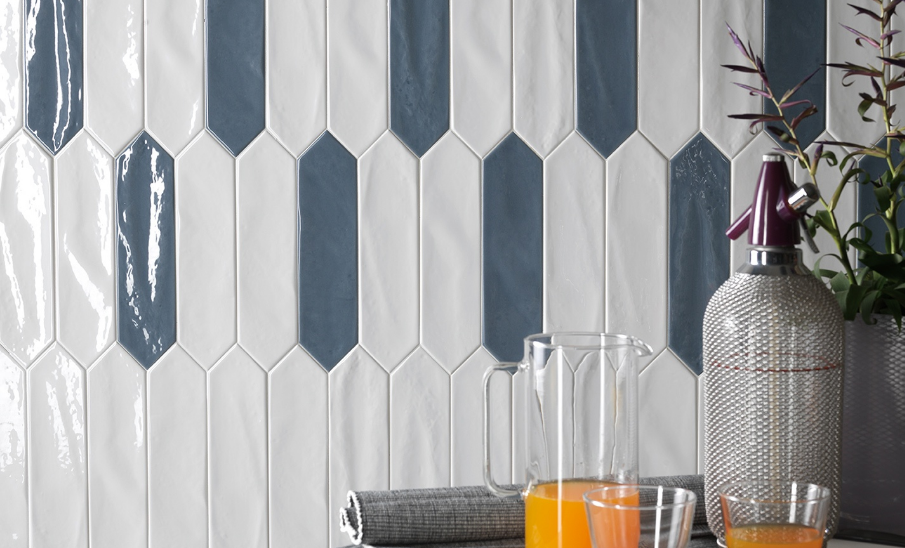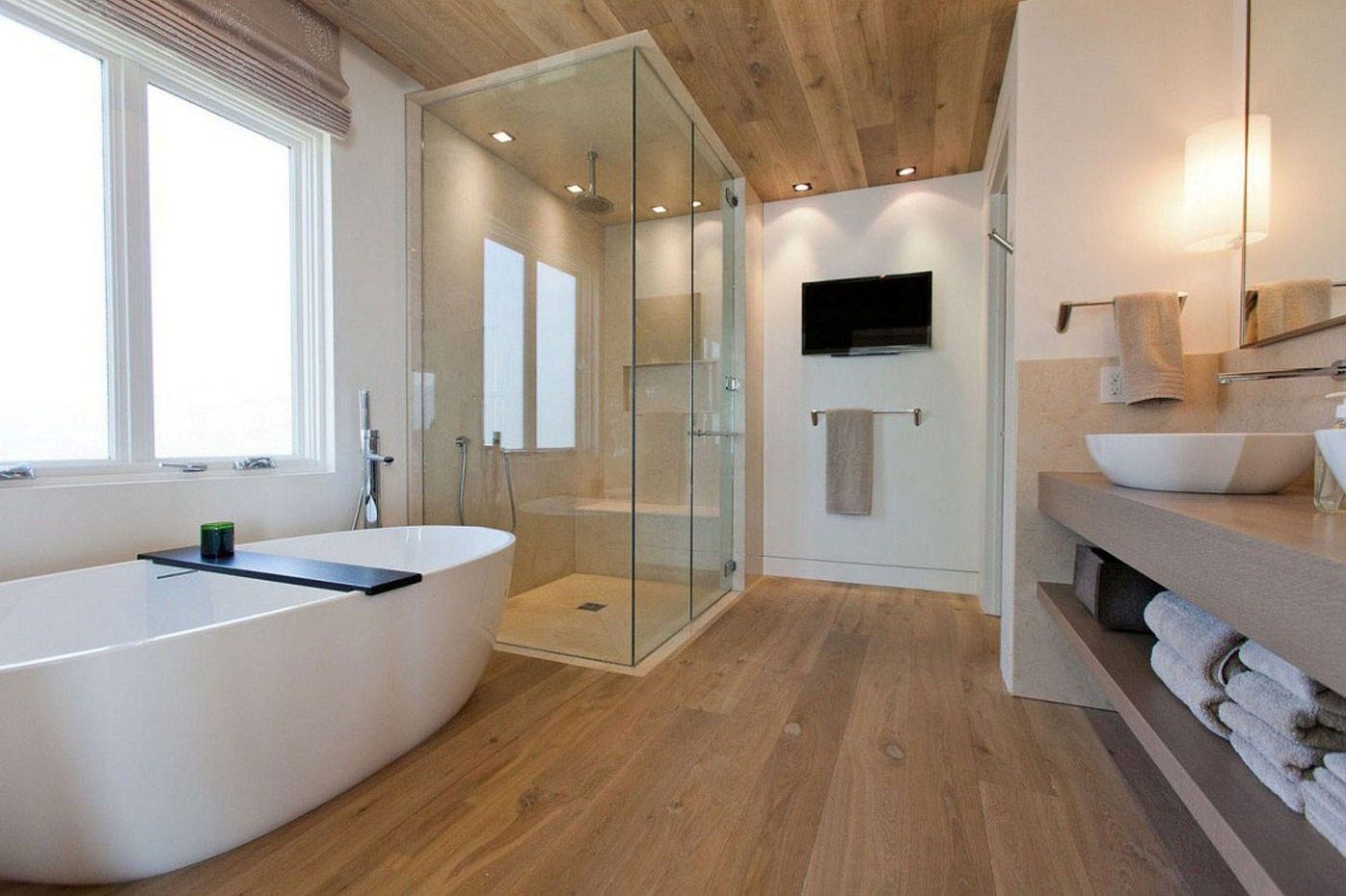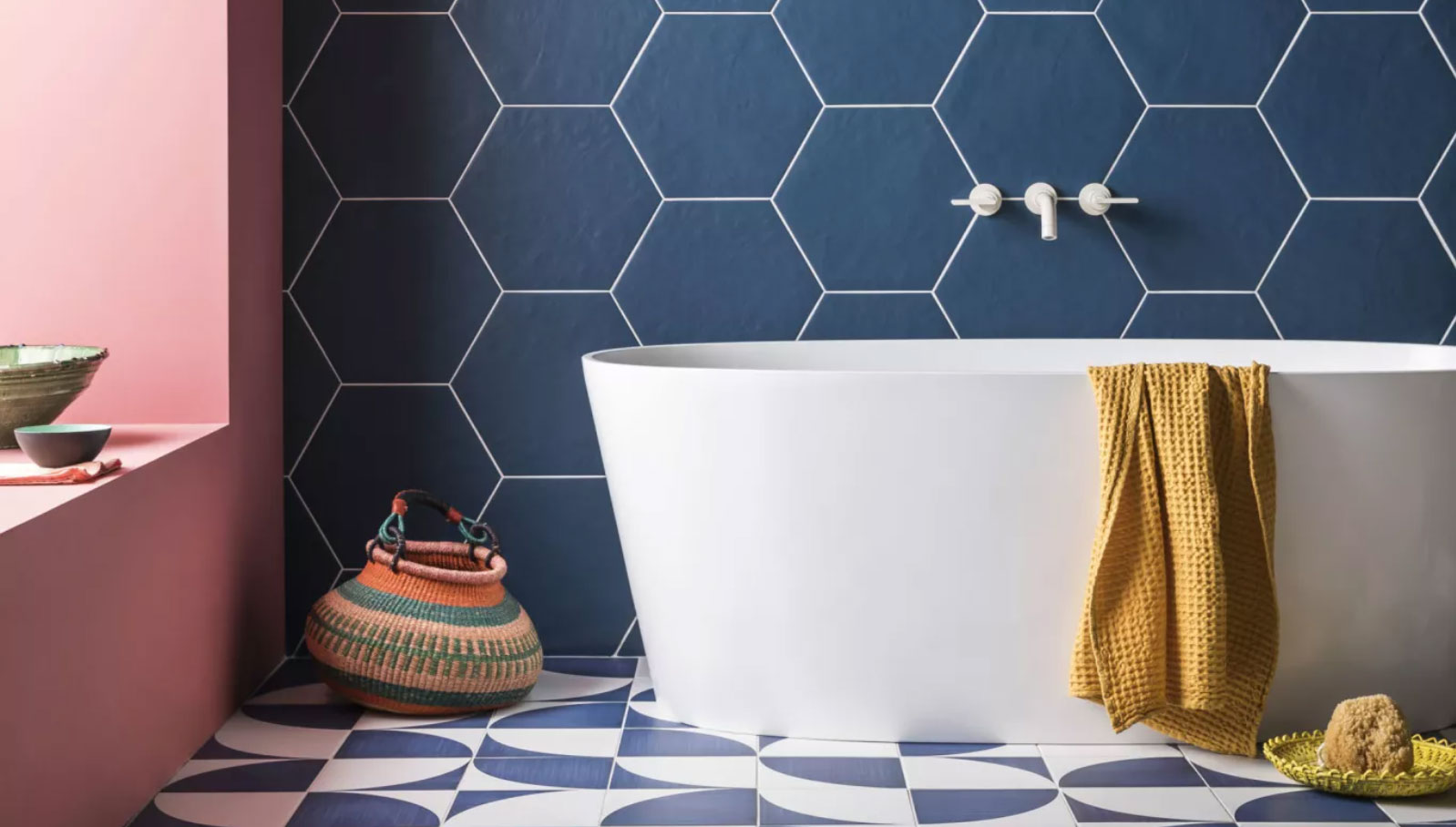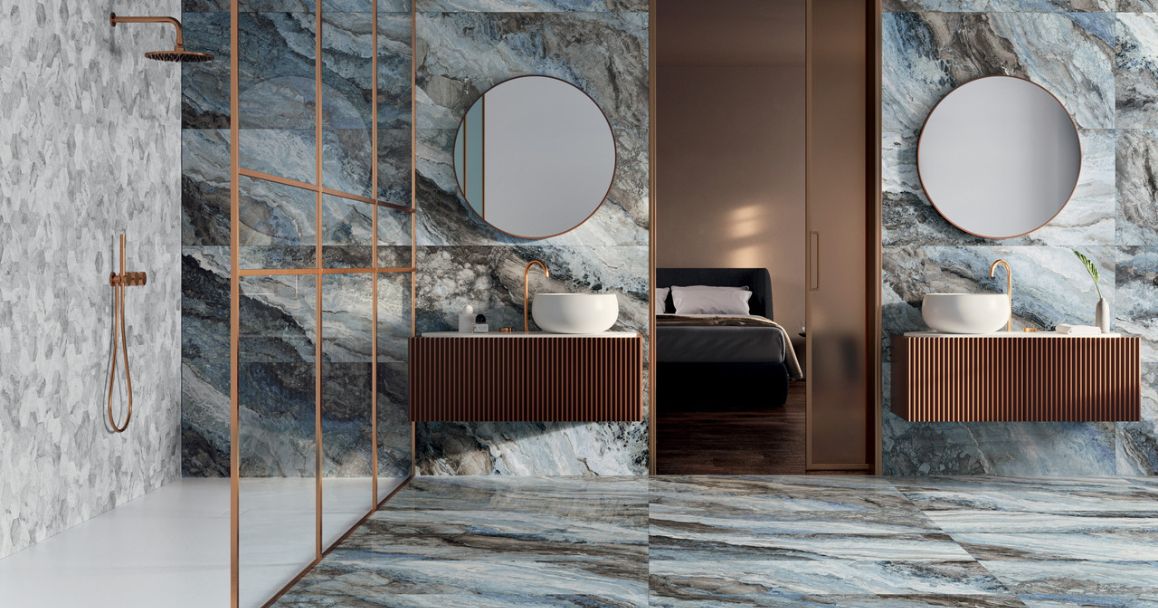When you are selecting new tiles for your interior design project, it is absolutely crucial to also take their layout pattern into consideration and of course, ensure this information is accurately communicated to your Tiler. Tile layout patterns can either be specified and shown in your Designer’s or Builder’s drawings and documentation to ensure that all trades working on your project are all on the same page or, your layout preferences can be communicated to your nominated Tiler on site prior to laying the tiles themselves.
Tile pattern and layout designs are incredibly varied so it is especially important to properly communicate your preferences to your Designer, Builder and Tiler to ensure your expectations are met. Thanks to the many material and shape variations available in tile designs, you are sure to find a tile combination that is perfectly suited to your own unique style and project, from the more traditional stacked and vertical stacked layouts to the more modern scattered and basket weave layouts.
Stacked Tile Layout
A stacked tile layout uses the tiles to create a ‘grid-like’ pattern, with each tile sitting directly on top of the tile below it. The tiles are ‘stacked’ over one another, setting a very structured and geometric scene in your design that can work especially well in more modern or contemporary styled interiors. When selecting your tile grout, it is important to consider whether or not you want to accentuate the grid pattern of the stacked layout or create more of a seamless finish. A contrasting coloured grout will draw more attention to the grid layout whereas a complementing or matching coloured grout will create more of a seamless finish making this style more suited to smaller spaces where too much visual clutter can detract from the overall design experience.
Vertical Stacked Layout
Most popular with rectangular shaped tiles, a vertically stacked tile layout flips the traditional rectangle shape on its side and runs the tiles vertically up the wall. This tile layout will once again look right at home in a modern or contemporary styled interior design project. This particular layout style provides the additional benefit of creating the illusion of added space in the room, effectively adding a sense of height to your walls. Using a vertical stacked layout, running the tiles up the walls will draw the eye upwards, allowing the ceiling to appear higher and create the perception of added height, making this style of layout perfectly suited to homes with lower ceilings.
Caption: Creating a stacked or vertically stacked tile layout doesn’t necessarily mean you are restricted to choosing rectangular shaped tiles; any elongated tile shape will also do the trick! These picket style wall tiles are laid vertically to help create the illusion of additional height in the space as the pattern draws the eye upwards in the room.
Staggered (or Brick Bond) Tile Layout
A traditional and timeless tile laying style, a staggered or brick bond layout is achieved using square or rectangular shaped tiles that can be laid in slightly staggered rows. This style of tile layout is normally seen used with the ever popular subway tiles, creating a delightfully timeless aesthetic in any interior design project, whether you are selecting your new kitchen splashback tiles or bathroom floor tiles.
Herringbone Tile Pattern
Laying tiles in a herringbone layout will normally use a rectangular shaped tile (such as the classic subway tile for example) that is placed at a 45° angle. Each tile interlocks with the next to form a ‘V’ shape, creating a classical look in your interior design project. You will find that this style is often used with marble tiles and is an especially popular layout for marble tiles in particular. As this luxurious natural stone lends itself well to traditionally styled interiors, the herringbone layout is preferred as it adds to the old world charm of a classic home.

Caption: Using a traditionally styled herringbone tile layout, these luscious marble subway tiles create the perfect rich complement to the stylish gold tapware and soft, blush toned vanity basin. Highlight the herringbone tile pattern by using a contrasting coloured grout that will work to accentuate the shape of your selected tiles.
Chevron Patterned Tiles
Similar in character to the traditional herringbone tile layout, the chevron style is also achieved using an elongated tile that is laid in a ‘V’ shape. Where the herringbone layout interlocks the rectangular shaped tiles together to create a sort of overlapping effect, the chevron layout instead uses tiles that feature slants on either ends to form a parallelogram, allowing the tiles to line up perfectly together in the ‘V’ shape.
Random or Scattered Tile Layouts
Taking a step away from the more traditional rectangular or square shaped tiles, creating a random or scattered look with your new tiles can be especially effective when using a unique shape such as triangular or hexagonal tiles. Tiles with different colours or sheen levels can be combined in a scattered pattern throughout your interiors to create a playful patchwork style design that will create a sense of whimsy in your design.

Caption: Using a random or scattered tile layout style, you can combine different colours or even finishes (such as matte versus glossy tiles) to create a stunning patchwork effect in your next tiling project. This technique will work well when using unique or non-traditional shaped tiles such as hexagons or triangles.
Basket Weave Tile Layouts
Using either rectangular shaped tiles or specifically shaped mosaic tiles, a basket weave tile layout is achieved by laying the pieces in a circular fashion so the tiles form a repeated woven design. This look is especially popular in traditional or period style interiors (such as in Art Deco styled homes for example) and can be perfectly accented by the use of a contrasting coloured grout that will emphasise the tile and pattern. As you can see, there are many different styles of tile layouts to choose from! When making your new tile selections it is important to also consider and confirm your preferred layout style so you can accurately communicate this information to your Tiler. This will ensure that there is no confusion throughout the process of your next interior design project to achieve an outcome that meets your expectations.












